Explore Jaisalmer
- Home
- Explore Jaisalmer
Discover Jaisalmer
Jaisalmer – The Golden City of India
Jaisalmer, a jewel in the heart of Rajasthan’s Thar Desert, stands as one of India’s most captivating travel destinations. The city holds a prestigious place among the many sightseeing marvels scattered across the desert region. Loved by both Indian and international travelers, Jaisalmer is a blend of history, color, and architectural brilliance.
Known as the Golden City, Jaisalmer is built entirely from golden sandstone, giving it a warm, radiant glow under the desert sun. Every house, with its intricately carved facades, narrow alleys, cobbled streets, short doors, and open courtyards, tells a story of timeless craftsmanship.
Here, relationships and community values come before everything else—business is built on mutual understanding and helping one another. Jaisalmer is a city where tradition, hospitality, and artistry harmoniously come together.
A journey through Jaisalmer is a mesmerizing experience—exploring majestic forts and ornate havelis, wandering through its winding lanes, riding camels across the golden dunes, or trekking into the vast desert expanse.
It’s no wonder architects and photographers call Jaisalmer the most photogenic town in India—a city where the stones themselves seem to speak, echoing tales of love, beauty, and history.
The rooms offer a minibar and air conditioning, allowing you to rest and refresh with ease.
Himmatgarh Palace Hotel features 24 hour front desk, a concierge, and room service. In addition, as a valued Himmatgarh Palace guest, you can enjoy a pool and free breakfast that are available on-site. Guests arriving by vehicle have access to free parking.
If you’re looking for an Asian restaurant, consider a visit to The Trio, The Jaisal Treat, or Restaurant Romany, which are all conveniently located a short distance from Himmatgarh Palace Hotel.
Jaisalmer is also known for some great art galleries, including Sonee Art Gallery, Lucky Art Gallery, and Chandrakanta Art's, which are not too far from Himmatgarh Palace Hotel.
Himmatgarh Palace looks forward to welcoming you on your visit to Jaisalmer.
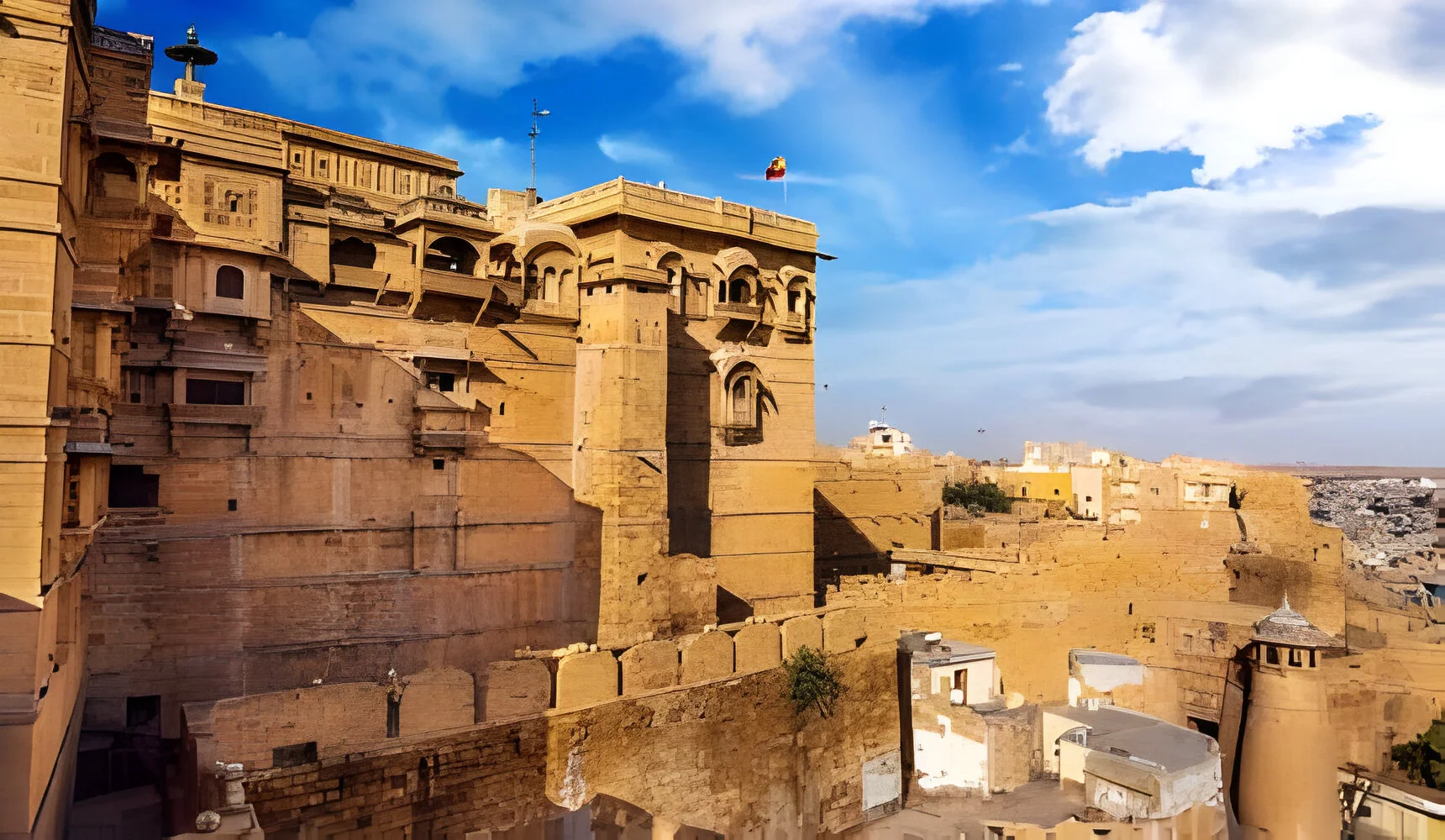
The Jaisalmer Fort
The Jaisalmer Fort, famously known as Sonar Quila or The Golden Fort, rises majestically from the heart of the Thar Desert, blending seamlessly with the golden hues of the surrounding sands. As the sun sets, the fort glows with a mesmerizing brilliance, casting an enchanting spell over the city and adding an air of mystique to the landscape.
Built in the classic Rajput style by skilled local craftsmen, this architectural marvel stands as a proud symbol of Rajasthan’s royal heritage. Its massive walls, intricately designed gateways, and golden sandstone structure reflect the timeless beauty and grandeur of the bygone era.
City Palace Jaisalmer
Within the Jaisalmer Fort stand several splendid palaces that highlight the artistry of the Rajput era. The Sarvottam Vilas, Rang Mahal, Moti Mahal, and Sheesh Mahal are especially admired for their intricate carvings and graceful designs.
A separate section, the Rani Niwas, was built for the queens, offering privacy and comfort within the fort. Today, part of this royal complex has been converted into a museum that provides valuable insight into the legacy of the Bhati Rajputs, the valiant rulers of Jaisalmer.

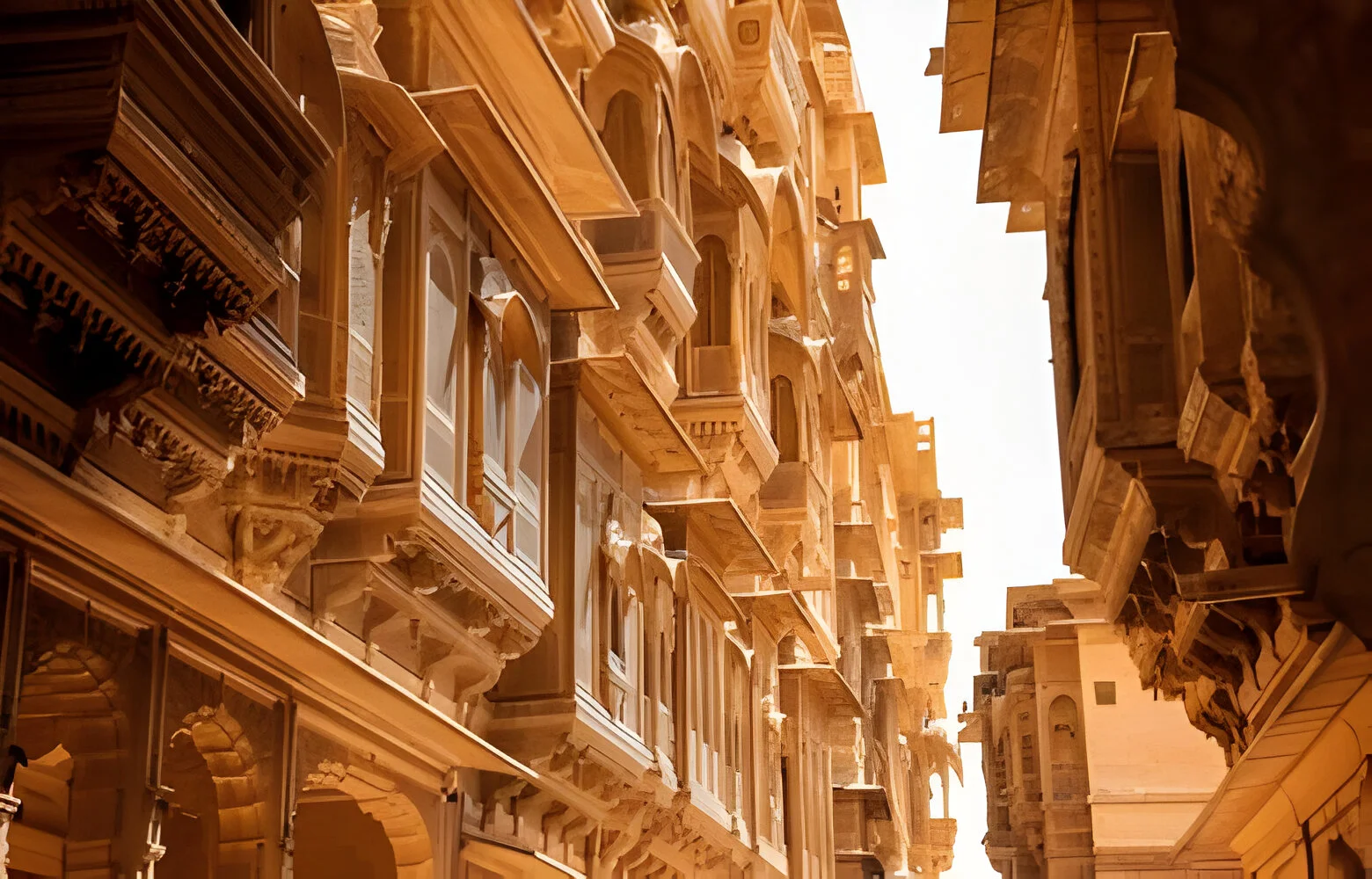
Patwon Ki Haveli
The Patwon Ki Haveli is one of the most remarkable architectural masterpieces in Jaisalmer and holds a special place among the city’s havelis. It is significant for two main reasons—first, it was the very first haveli built in Jaisalmer, and second, it is not a single mansion but a cluster of five smaller havelis, each with its own unique charm and craftsmanship.
Constructed by a wealthy merchant, this grand complex is adorned with intricate facades, detailed balconies, and beautifully carved windows that showcase the artistic brilliance of the local artisans. Together, they reflect the opulent lifestyle and cultural richness of Jaisalmer’s glorious past.
Tanot Mata Mandir
Located in the village of Tanot, near the Indo-Pak border in the Jaisalmer district, the Tanot Mata Temple is one of the most revered and fascinating attractions of the Thar Desert. Surrounded by legends of faith and divine protection, the temple is believed to possess mystical powers that have safeguarded the region for centuries.
Its deep spiritual aura and historical significance draw countless visitors, inspiring awe and devotion among all who step into its serene premises. The temple stands as a symbol of unwavering belief and purity amidst the vast expanse of the golden desert.

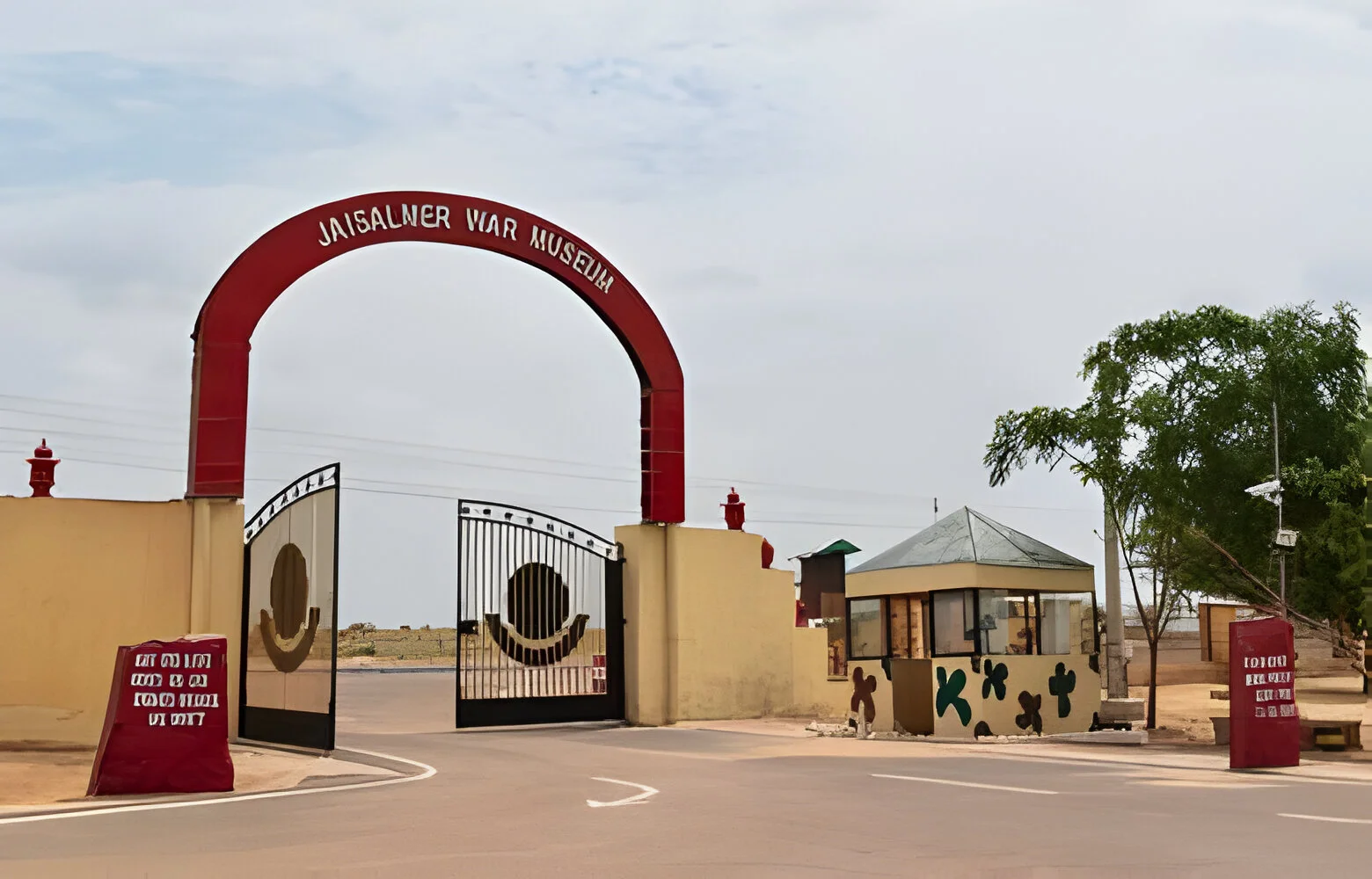
Longewala
The Battle of Longewala (4–7 December 1971) was one of the first major confrontations in the western sector during the Indo-Pak war. It stands as a legendary tale of courage, strategy, and patriotism, where a small group of Indian soldiers heroically defended their post against overwhelming odds.
To honor their bravery, the Longewala War Museum was established near the battle site in Jaisalmer. This heritage museum showcases war relics, photographs, and equipment used during the conflict, offering visitors a glimpse into India’s military history. It serves as a proud reminder of the valor and sacrifice of the Indian Army in protecting the nation’s borders.
Kuldhara Abandoned Village
Located near Jaisalmer, Kuldhara is an abandoned village shrouded in mystery and legend. Established around the 13th century, it was once a thriving settlement of the Paliwal Brahmins, known for their wisdom and prosperity.
By the early 19th century, the village was suddenly deserted, and the reasons for its abandonment remain uncertain—some believe it was due to a dwindling water supply, while others attribute it to local folklore and curses. Today, Kuldhara stands silent amidst the sands of time, its ruins evoking curiosity and wonder among all who visit.

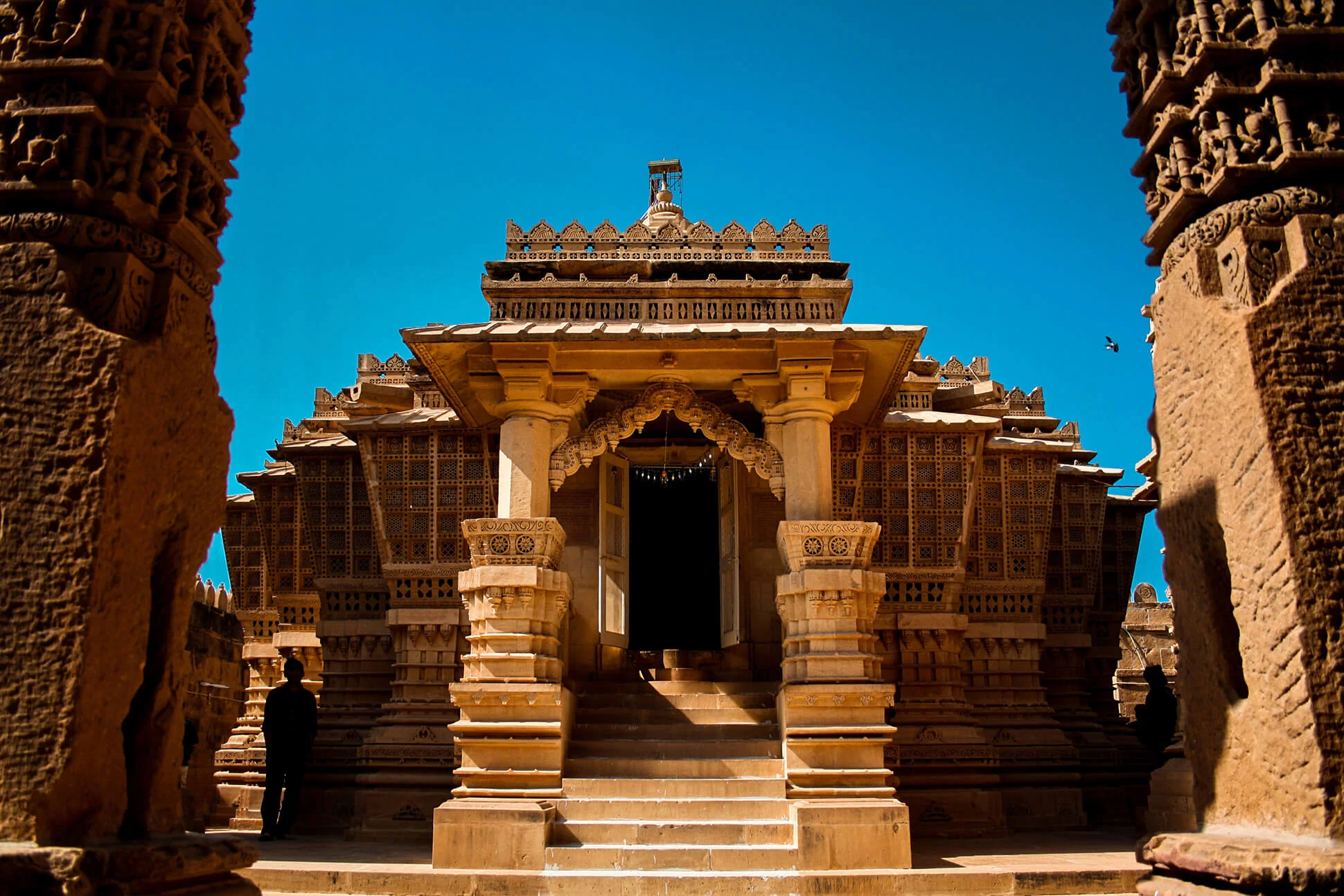
Lodarwa Jain Temple
Lodurva, once the thriving capital of the Bhati Rajputs, was a prosperous city before the rulers shifted their seat to Jaisalmer. Though much of its former grandeur has faded with time, Lodurva still holds immense historical and spiritual significance.
Today, it stands as a major tourist attraction, drawing visitors with the fascinating ruins of its ancient Jain temples, known for their delicate carvings and intricate craftsmanship. The site exudes a quiet charm, echoing the glory of a bygone era that continues to live through its sacred stones.
Bada Bagh
Located on the Ramgarh Road, Bada Bagh, which literally means “Big Garden,” is a serene and historic site just outside Jaisalmer. Commissioned by Maharawal Jait Singh in the early 16th century and completed by his son Lunakaran, this place beautifully blends nature and heritage.
The complex features a garden, a tank, and a dam, creating a peaceful setting amidst the desert landscape. Most striking are the royal cenotaphs (chhatris) built in honor of the rulers of Jaisalmer, each adorned with detailed carvings and domed pavilions. Nearby stands the Govardhan Stambh, a commemorative pillar that adds to the site’s historical charm and grandeur.
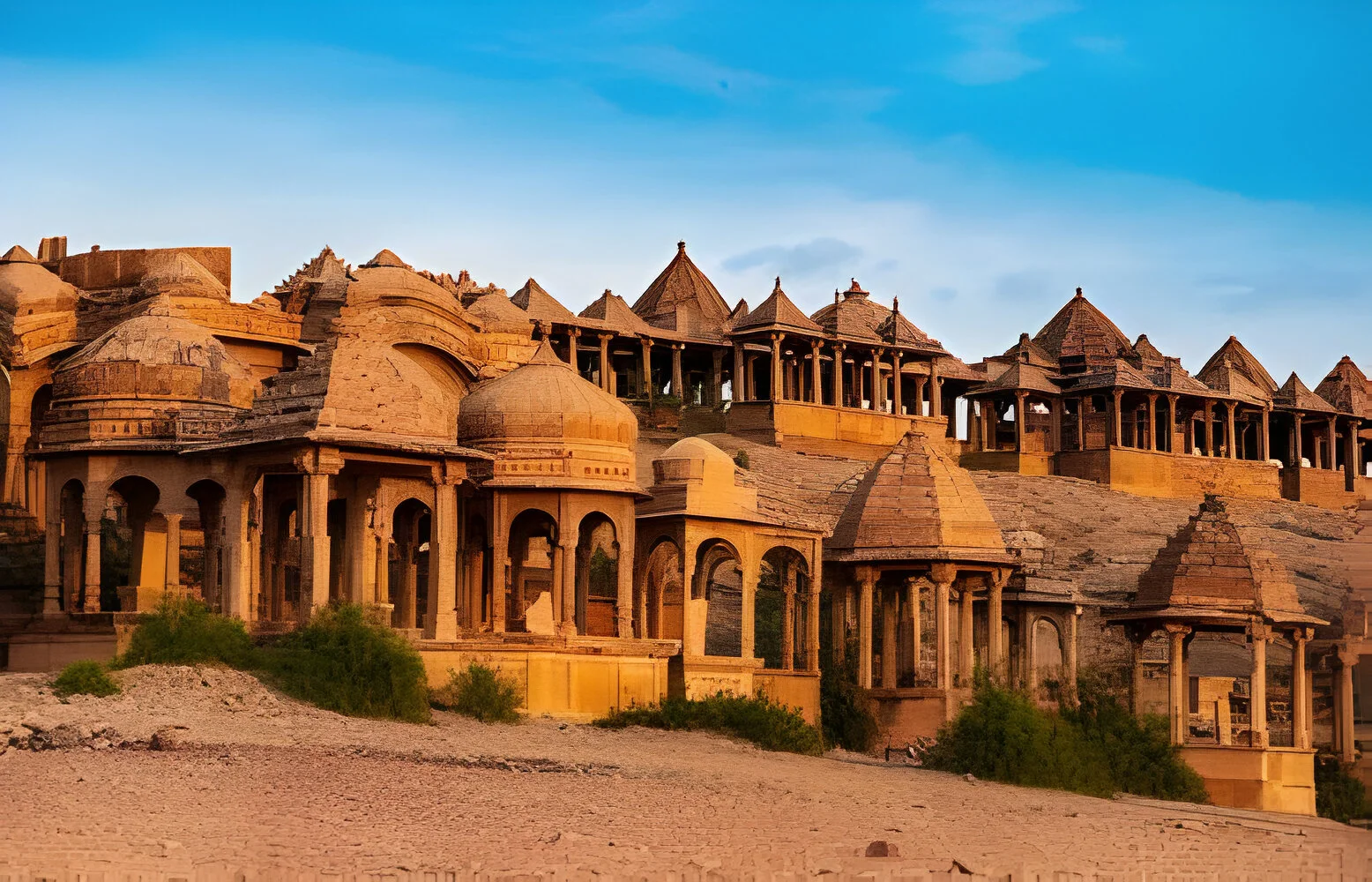

Vyas Chhatri
Vyas Chhatri, often known as Sunset Point, offers one of the most enchanting views of Jaisalmer at sundown. Located atop Sooli Dongri, this beautiful site is dedicated to Sage Vyas, the author of the Mahabharata, and serves as a memorial ground for Brahmins.
As the sun dips below the horizon, the golden hues of the sandstone structures glow against the desert sky, creating a breathtaking panorama of the city and its surroundings. A favorite among photographers and travelers alike, Vyas Chhatri is the perfect spot to witness the timeless beauty of the Golden City.
Gadisar Lake
Gadsisar Lake is one of the most popular and tranquil attractions in Jaisalmer. Located on the outskirts of the city, it offers a peaceful retreat away from the bustling streets. Contrary to popular belief, the lake is not a natural oasis but a water conservation tank built around 1400 A.D. by the then Maharaja of Jaisalmer.
Surrounded by beautifully carved temples, shrines, and ghats, the lake provides a stunning view—especially during sunrise and sunset. The calm waters reflecting the golden hues of the city make it a perfect spot for relaxation, photography, and boating, capturing the serene charm of the desert landscape.
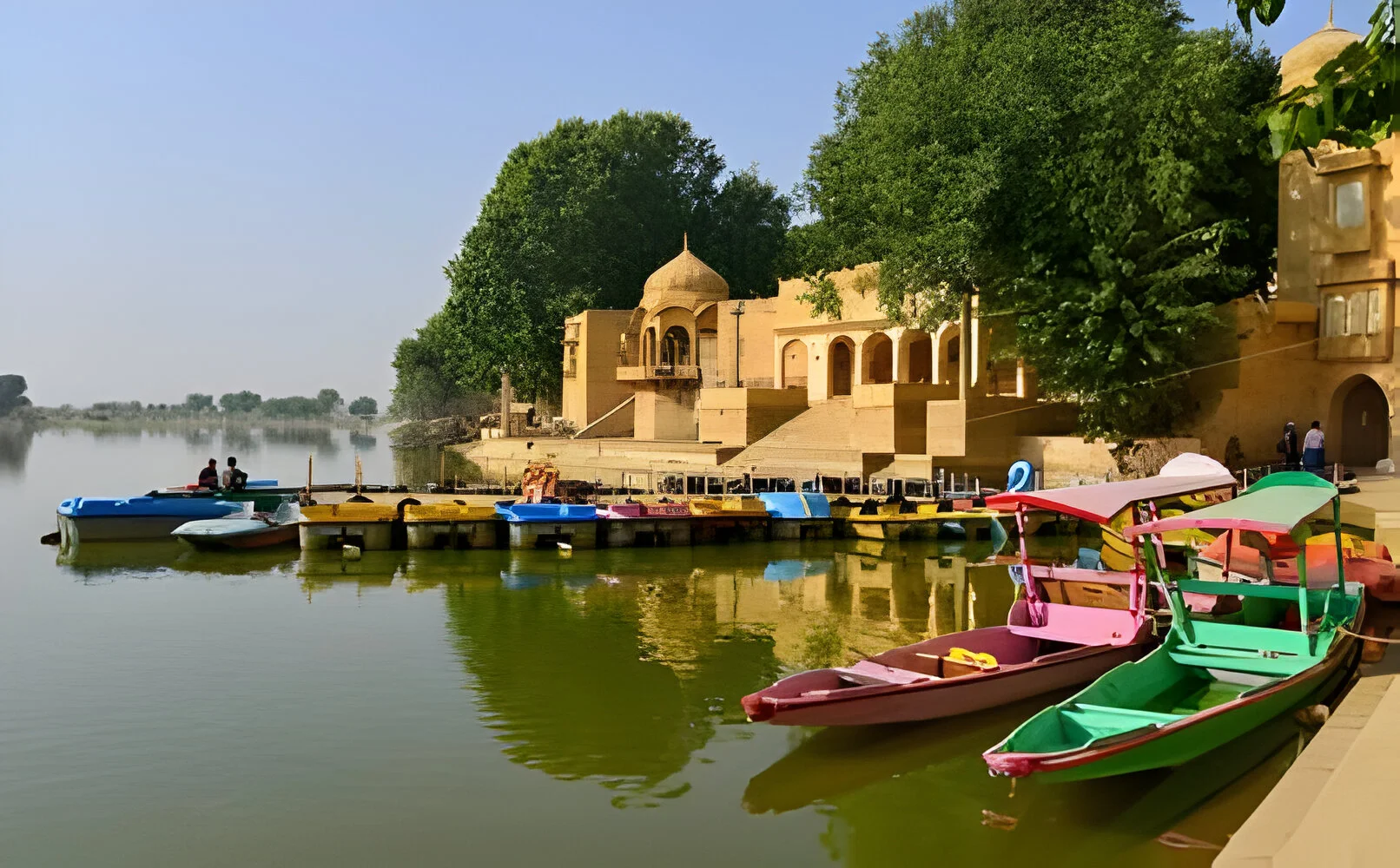
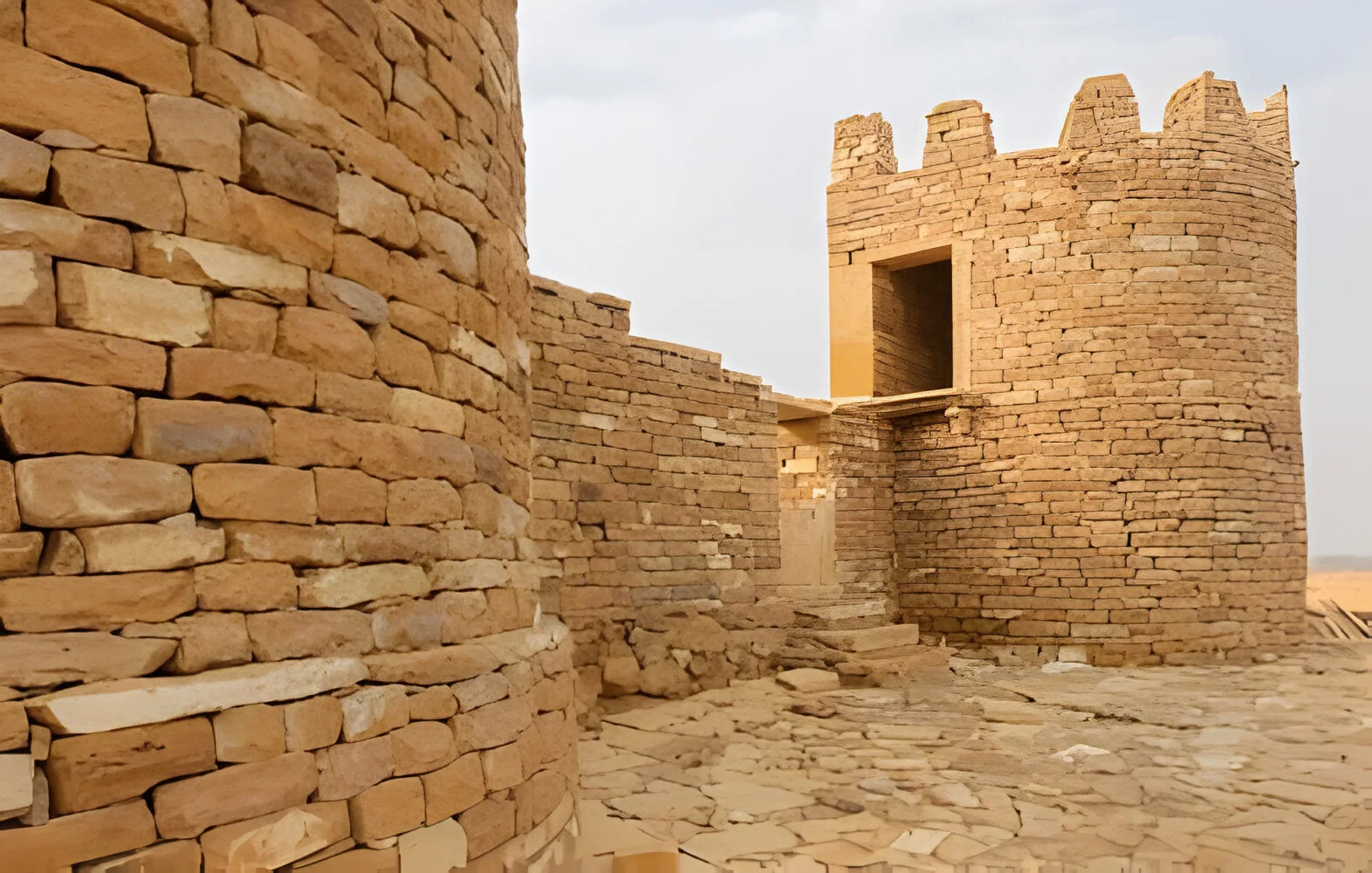
Khaba Fort
Khaba Fort, standing amidst the barren expanse of the desert, is a hauntingly beautiful ruin that echoes the mystery of a bygone era. Once a thriving village, it now lies abandoned—its crumbling houses and deserted streets adding to its eerie charm.
Architecturally impressive and steeped in legend, the fort offers a glimpse into the lives of the Paliwal Brahmins, who once inhabited the area before mysteriously vanishing centuries ago. Overlooking vast stretches of golden sands, Khaba Fort remains a captivating destination for history lovers and explorers drawn to its silence, solitude, and mysticism.
Nathmal Ki Haveli
Nathmal Ji Ki Haveli was commissioned by Maharawal Beri Sal as the residence of Diwan Mohata Nathmal, the then Prime Minister of Jaisalmer. This 19th-century mansion stands as a stunning example of the city’s intricate sandstone architecture and artistic excellence.
The haveli was designed and constructed by two brothers, Hathi and Lulu, who worked simultaneously on opposite sides of the structure. Though their work was never perfectly symmetrical, the result is a masterpiece adorned with finely detailed carvings, grand facades, and delicate motifs that beautifully capture the essence of Jaisalmer’s craftsmanship.
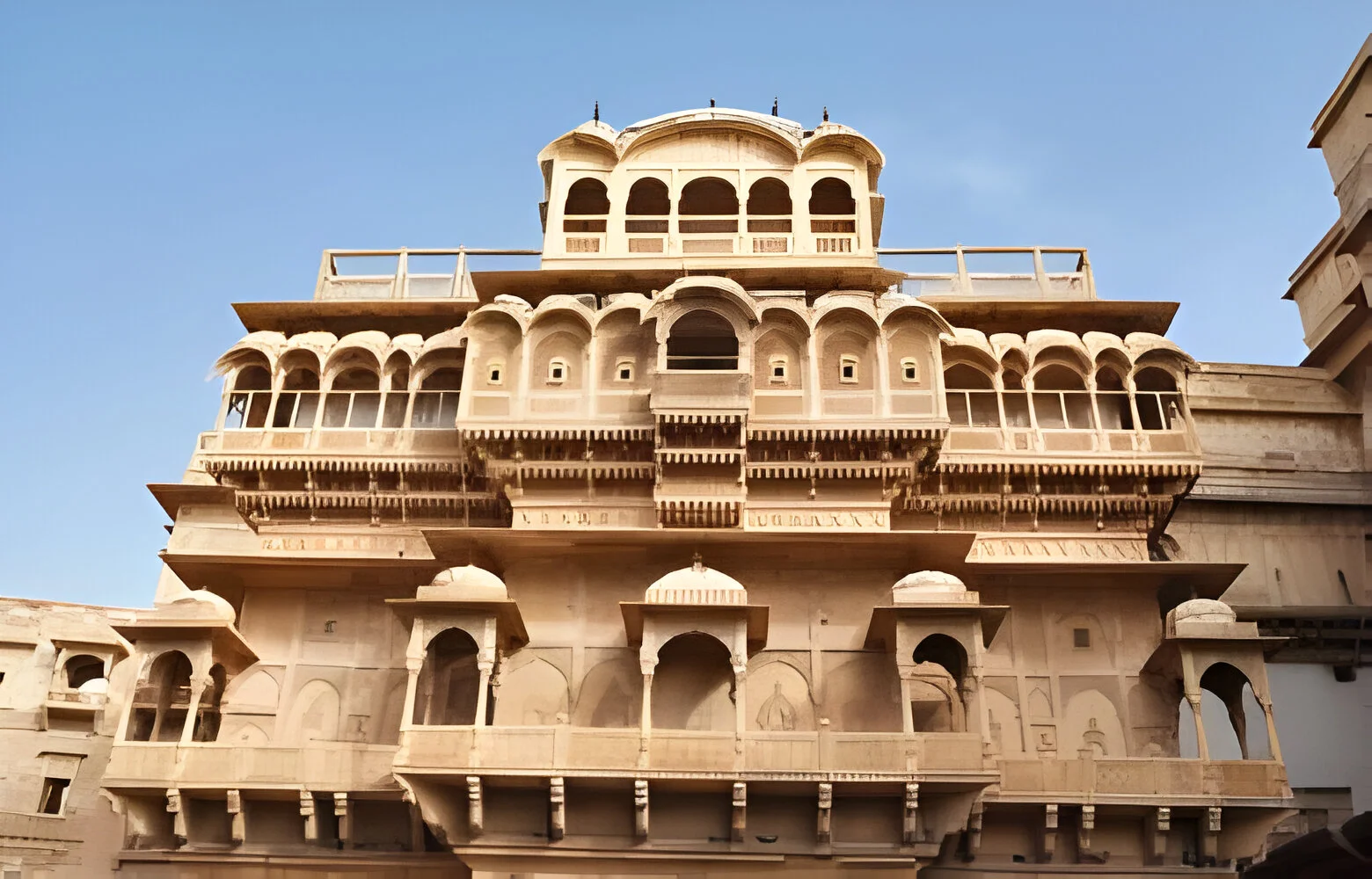

Salim Sigh Ki Haveli
Built in 1815 by Salim Singh, the prime minister of the Jaisalmer kingdom, Salim Singh Ki Haveli stands as one of the city’s most striking architectural marvels. Unlike traditional structures, this magnificent mansion was built without cement or mortar—its stones are held together by strong iron rods, showcasing the ingenuity of the local craftsmen.
The haveli is renowned for its 38 beautifully carved balconies, each featuring unique designs and graceful arches that lend the building its distinctive character. With its peacock-shaped façade and intricate detailing, Salim Singh Ki Haveli perfectly captures the artistic spirit and royal elegance of Jaisalmer’s golden heritage.
